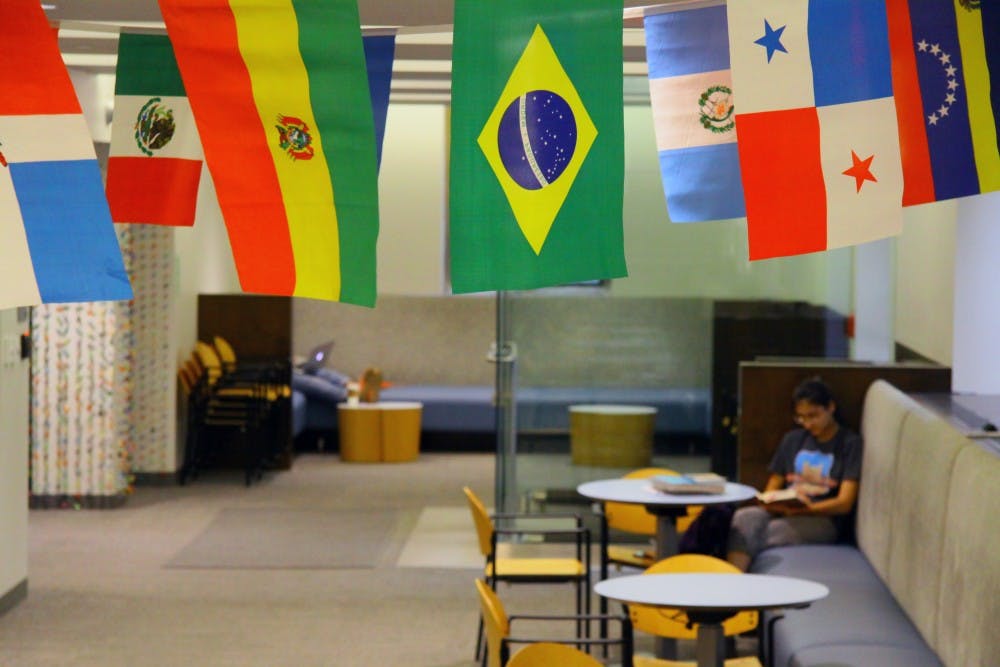
Many Penn students may have cultural experiences that are not widely addressed by specific minority groups.
Credit: Freda ZhaoMany students seem to effortlessly fit into cultural groups at Penn, but for some, it’s more complicated than simply choosing one.
For mixed-race students, finding racial or cultural groups to identify with can be more of a challenge. Being from a mixed cultural background comes with unique experiences that are more complex than simply combining the two — or more.
College sophomore Emily Marucci is Chinese, but was adopted into a white family at a very young age. She said people “are always confused [why] my last name is Italian. It’s too long to be Asian.”
“I feel like sometimes I’m expected to be in different circles than I am,” Marucci added. “Racially, I’m supposed to be Asian-American, but I identify more as white. No one ever thinks that when they look at me.”
Wharton sophomore Deena Char also identifies with this frustration. With a mix of Japanese, French and Native-American backgrounds, she finds it insulting when people pigeonhole her into one identity.
“Just because I’m Asian, it doesn’t mean that I want to be in an Asian organization,” Char said.
One of the struggles mixed-race people face is formally identifying their ethnicities on demographic forms. Often they must fill in a bubble marked “other,” choose one identity over the other or occasionally have the option to choose a “multiracial” or “mixed” bubble.
“To lump us all into one ‘none of the above’ category just doesn’t feel right,” Wharton sophomore Avery Stephenson, who identifies as Filipino and black, said.
Penn students all have different cultural experiences that are not widely addressed by minority groups. Interacting with only one race can threaten efforts for discussion about race within the Penn community. Char says that she feels this polarization contributes to ignorance about other cultures.
“It feels weird to me that that ignorance exists because we’re at such a diverse school where we can branch out and explore so many different cultures,” Char said. “Why come here and just stick with what you know?”
Some cultural groups fade into the background simply because others are more active and established on campus. The narrative that usually focuses on black and white cultures, for example, is fueled by the fact that many black groups tend to speak out about relevant issues.
“I think the black community has just become more vocal, which is great,” Stephenson said. “Other groups are still on their way to becoming that vocal.”
Char recalled an incident from last semester when she believed the Vietnamese Student Association wasn’t as vocal as it could have been. During Spring Fling, the group alleged that they experienced a hate crime at a VSA event. Char suggested to the association’s president that they should hold a protest and make the Penn community aware of the discrimination that they had faced, but the president respectfully declined, she said. As a result, she believes the incident and the tensions in the community faded away without further thought.
But groups are developing on campus to address these issues.
“Having a community that can come together and speak about these issues leads to better visibility,” Stephenson said.
While groups for mixed-race minorities, like Check One, exist, students say these organizations are less well-known than others. Stephenson said this year, she looks forward to being a part of groups such as these.
“Last year I didn’t even know about [Check One], and I really wish I had because I would love to have a community of people that understand the specific issues that I have,” Stephenson said.
Minorities experience issues unique to their identities that can’t be encompassed by any single racial affiliation. Having multiple ethnicities comes with its own set of challenges.
“Hopefully in time ... each group will have equal representation,” Stephenson said, “because we all face very similar struggles, such as stereotypes.”
Char advises others not to feel pressured into fitting into one cultural identity.
“Being mixed-race makes you unique,” she said. “Own that uniqueness.”
The Daily Pennsylvanian is an independent, student-run newspaper. Please consider making a donation to support the coverage that shapes the University. Your generosity ensures a future of strong journalism at Penn.
DonatePlease note All comments are eligible for publication in The Daily Pennsylvanian.




